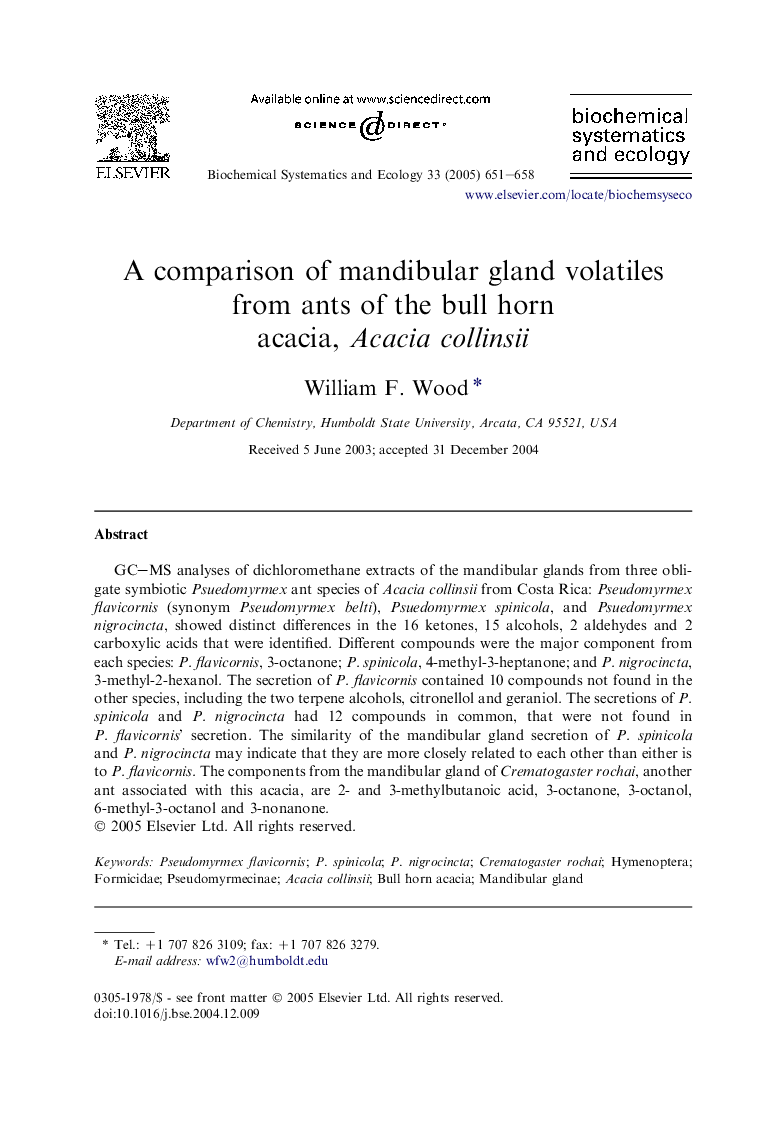| Article ID | Journal | Published Year | Pages | File Type |
|---|---|---|---|---|
| 10581713 | Biochemical Systematics and Ecology | 2005 | 8 Pages |
Abstract
GC-MS analyses of dichloromethane extracts of the mandibular glands from three obligate symbiotic Psuedomyrmex ant species of Acacia collinsii from Costa Rica: Pseudomyrmex flavicornis (synonym Pseudomyrmex belti), Psuedomyrmex spinicola, and Psuedomyrmex nigrocincta, showed distinct differences in the 16 ketones, 15 alcohols, 2 aldehydes and 2 carboxylic acids that were identified. Different compounds were the major component from each species: P. flavicornis, 3-octanone; P. spinicola, 4-methyl-3-heptanone; and P. nigrocincta, 3-methyl-2-hexanol. The secretion of P. flavicornis contained 10 compounds not found in the other species, including the two terpene alcohols, citronellol and geraniol. The secretions of P. spinicola and P. nigrocincta had 12 compounds in common, that were not found in P. flavicornis' secretion. The similarity of the mandibular gland secretion of P. spinicola and P. nigrocincta may indicate that they are more closely related to each other than either is to P. flavicornis. The components from the mandibular gland of Crematogaster rochai, another ant associated with this acacia, are 2- and 3-methylbutanoic acid, 3-octanone, 3-octanol, 6-methyl-3-octanol and 3-nonanone.
Related Topics
Physical Sciences and Engineering
Chemistry
Organic Chemistry
Authors
William F. Wood,
